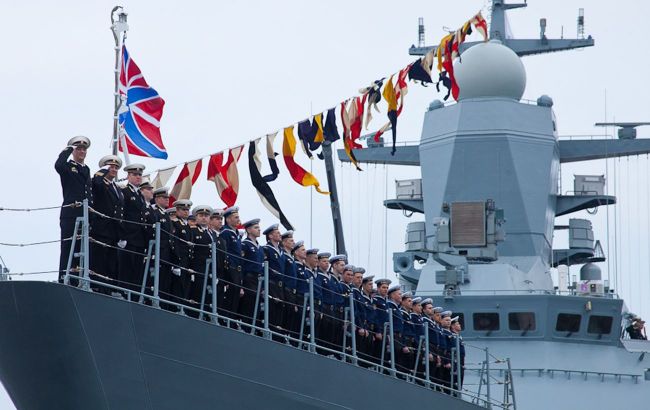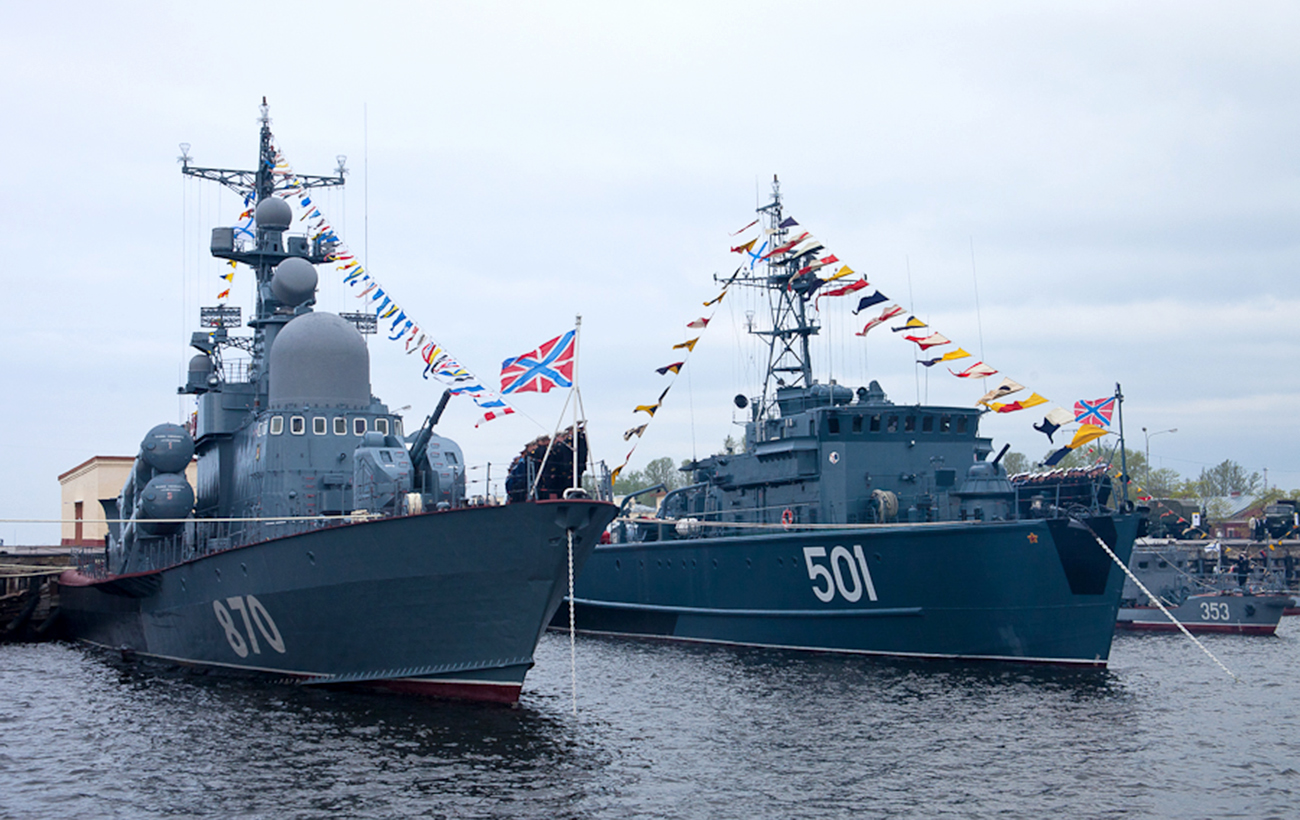How Königsberg became Kaliningrad and whether it could spark Russia-NATO war
 Can the war between NATO and Russia start from Kaliningrad (encyclopedia.mil.ru)
Can the war between NATO and Russia start from Kaliningrad (encyclopedia.mil.ru)
How the city founded by the Prussians became a Russian enclave in the Baltic, why Russians need Kaliningrad, and whether it could start a war between Russia and NATO - read in RBC-Ukraine article.
Sources used: YouTube channel "History without myths", Jyllands-Posten, Euractiv, The Telegraph, Politico, SuperExpress, and the commentary of analyst Oleksandr Musiienko.
Recently, statements about the threat of war between NATO and Russia have become more frequent in European countries. In particular, Danish Defense Minister Troels Lund Poulsen did not rule out that Moscow would decide to test the strength of NATO's Article Five in three to five years.
"NATO did not consider such an assumption in 2023. These are new data that have become known now," he said.
Other NATO member states also take the threat of Russian aggression seriously, although NATO Secretary General Jens Stoltenberg assures that there are no signs of a possible Russian attack today. In early January, Lithuania reintroduced compulsory military service for citizens aged 18-27—even those who live abroad. And Romania allowed the deployment of NATO forces on its territory in the event of a serious threat.
"I assume every scenario and take the worst most seriously. That is the role of the defense minister in the situation we are in today. These are not words thrown to the wind," said Polish Minister of National Defense Wladyslaw Kosyniak-Kamysh in February.
The Telegraph recently published a possible scenario of a Russian attack on NATO. According to The Telegraph's scenario, Russian aggression could begin in the Baltic states as early as 2024.

In the summer of 2024, as the agency writes, Russian cyberattacks on the Baltic states may begin, and Moscow may also incite unrest among Russian minorities in these states. In the fall, the Russians could deploy half a million soldiers to Kaliningrad and Belarus, and in the winter, they could start provocations in the Suwalki corridor (a small border line between Poland and Lithuania that separates the Kaliningrad region from Belarus), thus provoking a military conflict with NATO.
Russian base in the rear of NATO
How did it happen that an entire Russian region ended up separated from the rest of Russia, and in the middle of NATO countries? The history of Kaliningrad and the Kaliningrad region stretches back to the Middle Ages. At that time, the modern Kaliningrad region was inhabited by Prussian tribes, who founded the settlement of Twangste around the turn of the 10th and 11th centuries.
In the XIII century, the Teutonic Order received permission from Pope Gregory IX to conquer the Prussian territories and baptize them. The Teutons made several campaigns and eventually conquered the local tribes, founding the castle of Königsberg on the site of the destroyed Twangste.
The Teutonic Order ruled the region for almost 200 years, but in the fifteenth century, it recognized itself as a vassal of the Polish king. The Poles named Königsberg Królewiec and turned it into a center of Polish printing. One of the first universities in Poland was founded there. Formally, however, Królewiec belonged to the German vassals of Poland.
In the sixteenth century, Grand Master Albrecht of the Teutonic Order transformed the theocratic state of the Teutons into a secular Prussian Duchy, subject to Poland. Königsberg became the capital of the state. Later, the duchy became the Kingdom of Prussia after unification with Brandenburg.
The first Russian attempt to capture Königsberg occurred during the Seven Years' War in the eighteenth century. Then the Russian Empire's troops entered the city, but just four years later Peter III returned all the seized lands to Prussia as part of the Treaty of St. Petersburg. During the Napoleonic Wars, the Russian army suffered a crushing defeat in the battle with the French near Friedland (modern Pravdinsk in the Kaliningrad region) in 1807. After losing up to half of its army, the Russian Empire was forced to concede defeat in the war.
At the beginning of the First World War, the Russians made another attempt to capture Königsberg, which was already part of the German Empire at the time, but were defeated. After the First World War, Prussia found itself cut off from Germany by a piece of Polish territory, which in 1939 was one of the reasons for Adolf Hitler's attack on Poland.
 The Russians turned the Kaliningrad region into a base for their navy (photo: encyclopedia.mil.ru)
The Russians turned the Kaliningrad region into a base for their navy (photo: encyclopedia.mil.ru)
As a result of World War II, Königsberg, along with the northern part of East Prussia, was ceded to the Soviet Union. After the war, the Russians carried out the so-called "Sovietization," as a result of which Königsberg became Kaliningrad, and the region was named the Kaliningrad Oblast. At the same time, the Russians renamed all the settlements. After the collapse of the USSR and the formation of the independent Baltic republics, the region found itself cut off from the main part of Russia.
The Russians turned the Kaliningrad region and Kaliningrad itself into a military base. For example, the city of Baltiysk (formerly Pillau) is home to the largest naval base of the Russian Baltic Fleet. During Putin's rule, nuclear-capable Iskander missile systems and MiG-31K fighters, which are a source of concern for NATO countries, began to be based in the Kaliningrad region.
"The deployment of certain weapons, the deployment of certain military formations on Russian territory is an exclusively sovereign issue of Russian territory," Kremlin spokesperson Dmitry Peskov said in 2018.
However, in May 2022, against the backdrop of a full-scale invasion of Ukraine, Russian troops conducted exercises in Kaliningrad, during which they simulated the launch of ballistic missiles. The "targets" were airfields, military equipment, command posts of the imaginary enemy, and other strategic objects. At the time, German analysts viewed these exercises as intimidation of NATO.
Is Russia's attack on NATO possible?
It is unknown what exactly the above scenario of a conflict between NATO and Russia is based on. Perhaps this is nothing more than an assumption by The Telegraph, but it is not the first time that the threat of conflict in the Suwalki Corridor has been discussed. Back in the summer of 2022, Politico called the Suwalki Corridor the most dangerous place on the planet because it is where NATO's war with Russia could begin.
But whether Russia, which is bogged down in a full-scale war with Ukraine, has enough resources for another conflict. Especially with NATO. According to Oleksandr Musiienko, head of the Center for Military and Legal Studies, the answer to this question depends on the type of war to consider. If we are talking about full-scale aggression, like the war with Ukraine, then no. But a conflict based on the "Crimean scenario" is quite possible.
"If we take a war with the use of aviation, long-range missiles, cyberattacks, provoking unrest within NATO countries, with 'little green men' who can land in a conventional Latvia, Lithuania or Estonia, then it is possible. The entire Russian military machine is preparing to wage a war against NATO," Musiienko said in a commentary to RBC-Ukraine.

According to the analyst, there are several scenarios for a conflict between NATO and Russia. The first is the previously mentioned "Crimean scenario".
"For example, a month or two later, in Latvia, where there is a Russian-speaking community, some kind of unrest begins, during which helicopters from Belarus arrive, from which "little green men" land and begin to support the unrest. At this time, NATO will try to decide whether it was Russia that attacked or some terrorists," he explained.
Another scenario, according to Musiienko, is an attempt by Russia to land on Gotland (the largest Swedish island in the Baltic Sea), using the Baltic as a base. Or, Russian ships could block Denmark's access to the Baltic Sea to test how NATO would act - whether it would fire on Russian ships or try to force them to return to the Baltic.
Russian aggression against Poland is also quite possible, the expert believes. Such aggression is always considered from two directions - Belarus and Kaliningrad. "And, accordingly, this Suwalki corridor. This is the most threatening direction," he explained.
The expert said all of these possible scenarios have a common goal - to provoke a split in NATO. If the Russians do provoke a conflict, it will be one that will cause discussions and uncertainty within the Alliance about how to respond to Russia's actions.
"Russia is interested in disagreements within NATO. It is not interested in the occupation of NATO territory, it needs a split and shaking of unity to cause a serious crisis in NATO. Putin now needs to demonstrate NATO's inability to resolve such situations," the analyst told RBC-Ukraine.
Statements such as those made by former U.S. President Donald Trump that the United States would not help European NATO allies in the event of Russian aggression only serve to reinforce Putin's view of divisions within the Alliance and add to his confidence in the correctness of this strategy.

